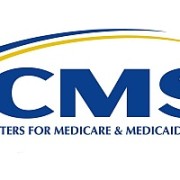Six Changes Impacting Meaningful Use Stage 1 Attestation
Many Eligible Providers are making the move from Stage 1 to Stage 2 of Meaningful Use and therefore much of the industry focus is on the changes between the stages. However, there are changes to the Stage 1 measures that will impact those still attesting to Stage 1.
CMS released six major changes to Stage 1 attestation in 2013. These include changes to the objectives, measures, and new exclusions some of which are optional, but one that is required.
The CMS policy change that will have the largest impact to attesting is that an exclusion of a menu set measure no longer counts towards meeting a measure. This means that in order to attest, an EP must still meet the requirements of 5 of the 9 menu set measures. In order to report on fewer than 5 menu set measures you must have an exclusion from the remaining measures.
Six Changes Impacting Meaningful Use Stage 1 Attestation
First Change (required):
The required change is to the Public Health Reporting Objectives. The clause “except where prohibited” has been added to all the population and public health measures. This clause was added to encourage all providers to submit public health data even if it is not required by state or local law. Providers still attesting to Stage 1 will still be required to select only one population and public health measure to report on as part of the required menu set measure.
Second Change:
The second change of the remaining changes is a removal of the Electronic Exchange of Electronic Information objective. Providers will no longer have to meet or attest to this objective in Stage 1; however, Stage 2 will include a more robust requirement for electronic exchange of health information as part of the objective for providing a summary of care record following a transition of care or referral.
Third Change:
The third change is the addition of an option to the Computerized Physician Order Entry (CPOE) measure. Providers will have the option to attest to the original measure or the alternative measure. To meet the original measure, a provider must enter one medication for more than 30% of all unique patients seen with at least one medication in their medication list. The alternative measure states that more than 30% of medication orders created by a provider during a reporting period are recorded using CPOE.
Fourth Change:
The fourth change is a change in the measure to Record and Chart Vital Signs. This change increases the age limit for recording blood pressure to 3yrs old. It also removes the age requirement for height and weight. This means that in 2013 providers have the option of reporting under the new measure or the old measure. The new measure states that more than 50% of unique patients seen during the reporting period over the age of 3 have their blood pressure recorded and that more than 50% of all unique patients seen have their height and weight recorded regardless of age. These both stipulate that the information be recorded as structured data. In 2014 all providers will have to meet the requirements of the new measure.
Fifth Change:
The fifth change on the list is an additional exclusion for those providers who do not have a pharmacy accepting electronic prescriptions within a 10 mile radius. This exclusion is applicable for providers attesting to MU Stage 1 in 2013 and beyond.
Sixth Change:
The final change applies again to the measure regarding Record and Chart Vital Signs. This new exclusion has four parts and replaces the current exclusion, whereas previous exclusions were in addition to the current exclusions. Providers may apply for exclusion if they do not see any patients over the age of 3, if all three vital signs are not relevant to their scope of practice, if height and weight are of relevant to their scope of practice, or if blood pressure is not relevant to their scope of practice. The first two parts of this exclusion pertaining to age and all three vital signs were part of the original exclusion. The last two allow the provider to be excluded from recording blood pressure or height and weight when these individual vital signs are not applicable for their practice. Because there are no longer age limits for height and weight in the new measure all EPs will have to record this information in 2014 and beyond.
Individual Exclusions:
Below the individual exclusions are listed out as seen in the CMS documentation.
1. EPs who see no patients 3 years or older are excluded from recording blood pressure;
2. EPs who believe that all three vital signs of height, weight, and blood pressure have no relevance to their scope of practice are excluded from recording them;
3. EPs who believe that height and weight are relevant to their scope of practice, but blood pressure is not, are excluded from recording blood pressure; or
4. EPs who believe that blood pressure is relevant to their scope of practice, but height and weight are not, are excluded from recording height and weight.
The last two changes discussed here apply only to EPs; however, the other changes apply to all providers including EPs, EHs, and CAHs. In some cases it may be beneficial to go ahead and implement changes that meet the new requirements as they may be optional in 2013, but will be the new measure in 2014. In other cases it may be beneficial to meet one of the new options as the current measure or option may be providing unique challenges for your organization. Either way it is important for those still attesting to MU Stage 1 to review their current workflows, documentation, and reporting to ensure that they will meet the measures put forth by CMS in the most efficient and cost effective manner while providing the highest quality of patient care possible.
Benjamin Maultsby, IMBA
Consultant, MBA HealthGroup

